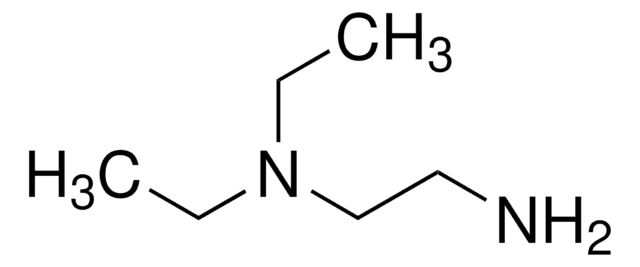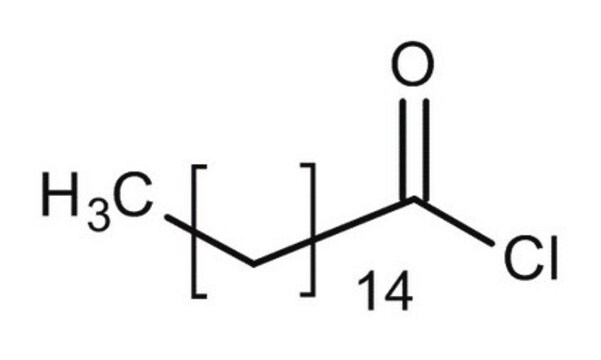156930
Lauroyl chloride
98%
Synonyme(s) :
Dodecanoyl chloride
About This Item
Produits recommandés
Niveau de qualité
Pureté
98%
Forme
liquid
Indice de réfraction
n20/D 1.445 (lit.)
Point d'ébullition
134-137 °C/11 mmHg (lit.)
Solubilité
methanol: soluble 100 mg/mL, clear
Densité
0.946 g/mL at 25 °C (lit.)
Chaîne SMILES
CCCCCCCCCCCC(Cl)=O
InChI
1S/C12H23ClO/c1-2-3-4-5-6-7-8-9-10-11-12(13)14/h2-11H2,1H3
Clé InChI
NQGIJDNPUZEBRU-UHFFFAOYSA-N
Application
- as tailoring agent for chemical modification of nanocelluloses of different length, nanofibrillated cellulose and cellulose nanocrystals
- in the preparation of acylated collagen with water solubility and better surface activity
- as organic low-friction boundary lubricant in the preparation of novel polyvinyl alcohol hydrogel
- in the synthesis of hemicellulose-based hydrophobic biomaterials
Mention d'avertissement
Danger
Mentions de danger
Classification des risques
Skin Corr. 1B
Code de la classe de stockage
8A - Combustible corrosive hazardous materials
Classe de danger pour l'eau (WGK)
WGK 3
Point d'éclair (°F)
284.0 °F - closed cup
Point d'éclair (°C)
140 °C - closed cup
Équipement de protection individuelle
Faceshields, Gloves, Goggles, type ABEK (EN14387) respirator filter
Faites votre choix parmi les versions les plus récentes :
Déjà en possession de ce produit ?
Retrouvez la documentation relative aux produits que vous avez récemment achetés dans la Bibliothèque de documents.
Les clients ont également consulté
Notre équipe de scientifiques dispose d'une expérience dans tous les secteurs de la recherche, notamment en sciences de la vie, science des matériaux, synthèse chimique, chromatographie, analyse et dans de nombreux autres domaines..
Contacter notre Service technique











